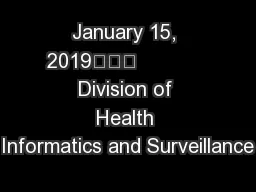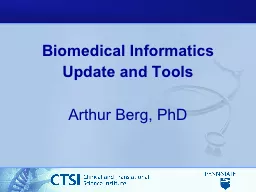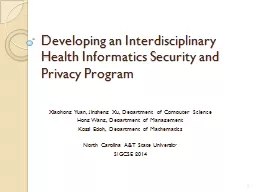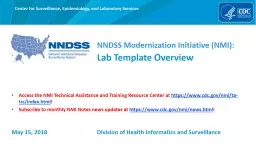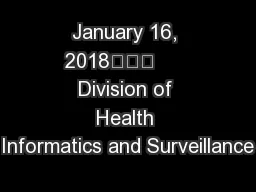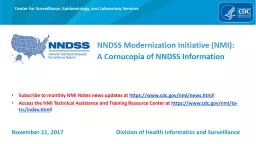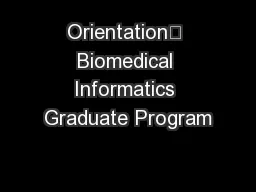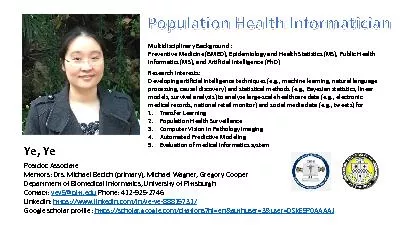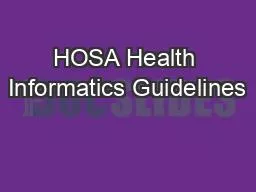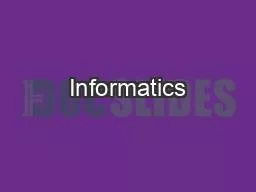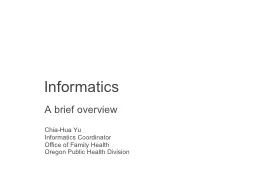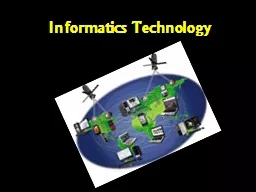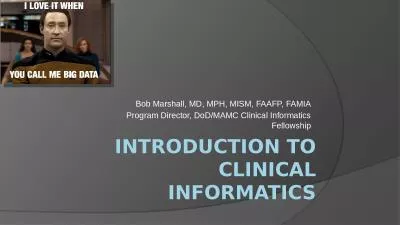PPT-January 15, 2019 Division of Health Informatics and Surveillance
Author : danika-pritchard | Published Date : 2019-02-19
NNDSS Modernization Initiative NMI NNDSS Changes Resulting from CSTE Positions Statements and Implications for Sending Case Notifications Access the NMI Technical
Presentation Embed Code
Download Presentation
Download Presentation The PPT/PDF document "January 15, 2019 Division ..." is the property of its rightful owner. Permission is granted to download and print the materials on this website for personal, non-commercial use only, and to display it on your personal computer provided you do not modify the materials and that you retain all copyright notices contained in the materials. By downloading content from our website, you accept the terms of this agreement.
January 15, 2019 Division of Health Informatics and Surveillance: Transcript
Download Rules Of Document
"January 15, 2019 Division of Health Informatics and Surveillance"The content belongs to its owner. You may download and print it for personal use, without modification, and keep all copyright notices. By downloading, you agree to these terms.
Related Documents

